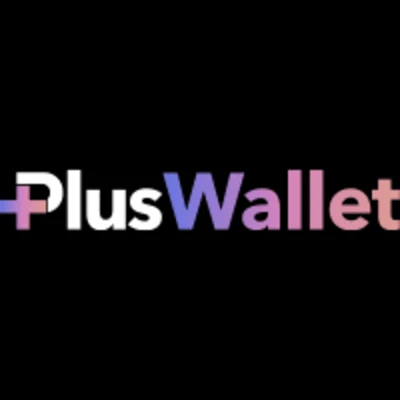As the world of cryptocurrency continues to evolve in 2025, the need for enhanced wallet security has never been greater. With billions of dollars worth of digital assets traded daily, hackers are constantly looking for ways to exploit vulnerabilities. Whether you're a seasoned investor or just getting started, keeping your digital assets protected should be a top priority.
This article shares essential tips and best practices to help you maintain a safe crypto wallet and choose a trusted cryptocurrency wallet to safeguard your investments.
Why Wallet Security Matters More Than Ever
In recent years, cyberattacks on crypto wallets and exchanges have become increasingly sophisticated. From phishing scams to SIM-swapping, malicious actors are constantly adapting their tactics. In 2025, with more mainstream adoption and the rise of cross-chain DeFi platforms, security risks are multiplying.
Unlike traditional banking, crypto wallets don’t offer centralized recovery support. If your wallet is compromised, there’s often no way to recover the lost funds. That’s why it’s vital to use a trusted cryptocurrency wallet and follow best practices to protect your keys, identity, and assets.
1. Use a Trusted and Reputable Crypto Wallet
Choosing a secure, reliable wallet is your first line of defense. Look for wallets that are known in the industry for their high-security standards and positive reviews.
Some qualities of a trusted cryptocurrency wallet include:
- Open-source code for transparency
- Strong community reputation
- Regular software updates
- Advanced encryption protocols
- Biometric and PIN-based login options
Plus Wallet, for example, is a popular safe crypto wallet that provides robust features like self-custody, cross-chain swaps, private key protection, and biometric access—making it ideal for both beginner and pro users.
2. Never Share Your Private Keys or Seed Phrases
Your private keys and recovery seed phrases are the most important credentials for accessing your crypto. If someone gets hold of them, they can control and transfer your funds.
To keep your wallet secure:
- Never store private keys online or in the cloud
- Write down your seed phrase and store it offline in a safe place
- Avoid sharing your wallet credentials over messaging apps or email
Hardware wallets and paper wallets offer an extra layer of protection by storing your keys offline.
3. Enable Two-Factor Authentication (2FA)
Always enable 2FA for any wallet or exchange account that supports it. This adds an additional verification step, making it more difficult for hackers to access your account even if they get your password.
Avoid using SMS-based 2FA due to SIM-swapping risks. Instead, use authentication apps like Google Authenticator or Authy for better protection.
4. Use Cold Wallets for Long-Term Storage
For investors holding large amounts of crypto, storing funds in a cold wallet (offline wallet) is considered one of the safest options. Cold wallets are not connected to the internet, minimizing exposure to cyber threats.
Use cold wallets such as:
- Hardware wallets (e.g., Ledger, Trezor)
- Paper wallets
- Air-gapped devices
Meanwhile, keep a hot wallet or mobile wallet for smaller, frequent transactions.
5. Keep Your Wallet Software Updated
Wallet providers frequently release updates to fix bugs, improve security, and add new features. Running outdated software can leave your wallet vulnerable to known exploits.
Make it a habit to:
- Check for updates regularly
- Enable automatic updates when possible
- Only download updates from official sources
If you're using a trusted cryptocurrency wallet, updates will be securely pushed through the app or website.
6. Be Aware of Phishing Scams
Phishing remains one of the most common ways hackers steal crypto. These scams often involve fake websites, emails, or social media accounts that look identical to official wallet or exchange platforms.
Protect yourself by:
- Always double-check URLs before entering credentials
- Bookmark your wallet or exchange's official site
- Never click on suspicious links in emails or DMs
Using a safe crypto wallet that alerts users to phishing risks or provides warnings can also help reduce exposure.
7. Use Strong Passwords and a Password Manager
Weak or reused passwords are an open invitation to hackers. Always create unique, strong passwords for your crypto wallets and accounts.
Best practices include:
- Use at least 12–16 characters
- Include uppercase, lowercase, numbers, and special characters
- Avoid using personal information (birthdays, names, etc.)
- Use a reputable password manager like Bitwarden or LastPass
8. Be Cautious on Public Wi-Fi
Accessing your crypto wallet while connected to public Wi-Fi can be risky. Hackers often target these networks to intercept data and login credentials.
To stay safe:
- Avoid logging into your wallet on public networks
- Use a VPN when accessing your wallet online
- Log out immediately after each session
9. Regularly Back Up Your Wallet
Having multiple backups of your wallet’s recovery phrase ensures you won’t lose access in case of theft, device failure, or accidental deletion.
Best backup practices:
- Use multiple secure locations (e.g., safe box, hidden home spot)
- Do not store backups digitally
- Update your backup if you make significant changes to your wallet
10. Choose a Self-Custodial Wallet When Possible
Self-custodial wallets give you full control of your crypto, meaning you hold your private keys instead of relying on a third party. In 2025, this is considered one of the safest ways to store assets, especially when using a safe crypto wallet that doesn’t compromise on user control or functionality.
Final Thoughts
As crypto adoption grows, so does the need for smarter and safer ways to store digital assets. Following these best practices can help ensure you’re prepared for potential threats while maximizing your control over your funds.
Choosing a trusted cryptocurrency wallet like Plus Wallet, using strong security hygiene, and staying vigilant can make all the difference in 2025 and beyond. Protect your crypto like your future depends on it—because in many ways, it does.


